John Charles Brim
b. April 10th, 1922 in Hopkinsville (Kentucky)
d. October 1st, 2003 in Gary (Indiana)
Grace Brim
b. July 10th, 1923 in Biscoe (Arkansas)
d. June 28th, 1999 in Gary (Indiana)
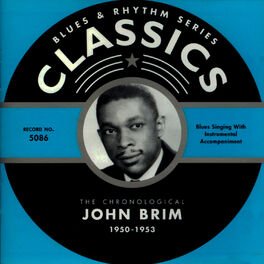
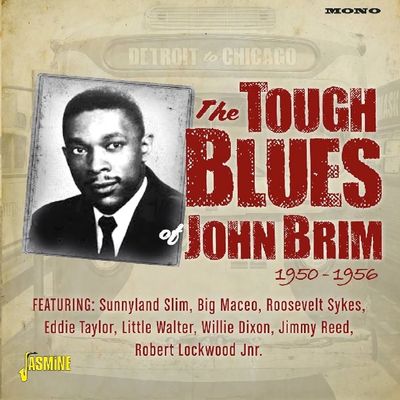
THE CHRONOLOGICAL JOHN BRIM
Classics
1950 - March 1954
THE TOUGH BLUES OF JOHN BRIM
Jasmine
1950 - April 1956
John s'installe en 1941 à Indianapolis. Il est fortement influencé par le duo Leroy Carr & Scrapper Blackwell et aussi par Harmon Ray (qui a enregistré sous le pseudonyme de Peetie Wheatstraw's buddy). En 1945, il arrive à Chicago travaillant dans une blanchisserie le jour et jouant du blues la nuit. John joue notamment aux côtés de grands bluesmen comme John Lee "Sonny Boy" Williamson, Doctor Clayton, Tampa Red. Un peu plus tard, il rencontre Grace Millard, chanteuse et harmoniciste de blues, à Gary (une ville située dans la banlieue de Chicago). Le couple joue fréquemment avec le pianiste Big Maceo qui leur propose d'enregistrer avec lui à Detroit. Ces morceaux paraitront sur le label Fortune en 1950 (les excellents "Strange man" et "Mean man blues"). Puis, ils enregistrent quatre morceaux pour le label Random (deux chantés par John, deux chantés par Grace) avec Roosevelt Sykes. John devient une figure importante (mais souvent méconnue) du Chicago Blues en collaborant avec le label JOB, dirigé par Joe Brown, délivrant, entre septembre 1951 et octobre 1952, de superbes titres comme "Man around my door" et "Hospitality blues" chantés par Grace, mais aussi "Young and wild", "Trouble in the morning", "Hard pill to swallow", "Drinking woman". Attirés par ce jeune talent, les frères Leonard & Phil Chess le font graver une poignée de titres dans lesquels il est accompagné de Little Walter, Willie Dixon, Eddie Taylor ou Fred Below. Encore une fois, ses morceaux sont remarquables, en particulier, les chefs d'oeuvre "Rattlesnake" et "Ice cream man" (repris plus tard par Van Halen) puis "You got me", "I would hate to see you go". Pour le label Parrot, il enregistre aussi le magnifique "Tough times" (Grace tient la batterie). Mais, malgré cette production de premier ordre, John reste dans l'obscurité dans les décennies suivantes. En 1960, John & Grace abandonnent la musique, rachètent une blanchisserie à Gary où ils s'installent.
John moved to Indianapolis in 1941. He was strongly influenced by the duo Leroy Carr & Scrapper Blackwell and also by Harmon Ray (who recorded under the pseudonym Peetie Wheatstraw's buddy). In 1945, he arrived in Chicago, working in a laundry by day and playing the blues by night. John plays alongside such blues greats such as John Lee “Sonny Boy” Williamson, Doctor Clayton and Tampa Red. A little later, he met blues singer and harmonica player Grace Millard in Gary (a town on the outskirts of Chicago). The couple frequently played with pianist Big Maceo, who suggested they record with him in Detroit. These songs were released on the Fortune label in 1950 (the excellent “Strange man” and “Mean man blues”). Then, they recorded four tracks for the Random label (two sung by John, two sung by Grace) with Roosevelt Sykes. John became an important (but often overlooked) figure on the Chicago Blues scene when collaborating with the JOB label, headed by Joe Brown, delivering, between september 1951 and october 1952, superb titles such as “Man around my door” and “Hospitality blues” sung by Grace, but also “Young and wild”, “Trouble in the morning”, “Hard pill to swallow”, "Drinking woman". Attracted by this young talent, the brothers Leonard and Phil Chess made him record a handful of tracks on which he is accompanied by Little Walter, Willie Dixon, Eddie Taylor or Fred Below. Once again, his songs are outstanding, particularly the masterpieces “Rattlesnake” and “Ice cream man” (later covered by Van Halen), followed by “You got me” and “I would hate to see you go”. For the Parrot label, he also records the magnificent “Tough Times” (Grace plays drums). But despite this first-rate production, John remained in obscurity in the following decades. In 1960, John and Grace gave up music, bought their own laundry in Gary where they live.
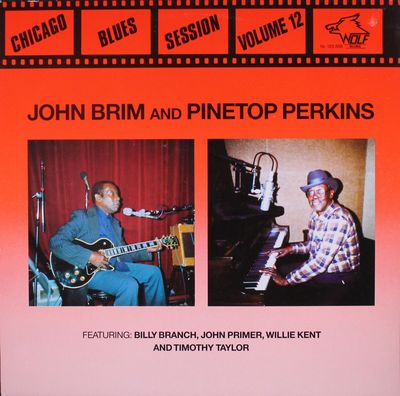
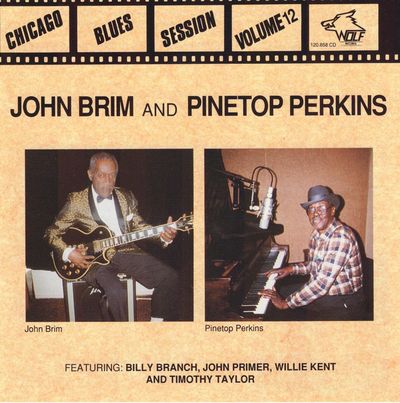
CHICAGO BLUES SESSION vol.12
Wolf
February 1989 (lp)
1971 / February 1989 (cd)
Une belle séance produite par Hannes Folterbauer et Willie Kent qui permit à John Brim d'enregistrer une poignée de morceaux intéressants. Accompagné notamment de l'harmoniciste Billy Branch, il donne de bons morceaux comme "I'm gonna let you go" et "Going back to Naptown". La version CD ajoute un simple enregistré en 1971 pour l'obscur label BB dans lequel John est accompagné de sa femme Grace et de ses fils.
A fine session produced by Hannes Folterbauer and Willie Kent that allowed John Brim to record a handful of interesting tracks. Accompanied by harmonica player Billy Branch, he delivers such good tunes as “I'm gonna let you go” and “Going back to Naptown”. The CD version includes a single recorded in 1971 for the obscure label BB, in which John is accompanied by his wife Grace and sons.
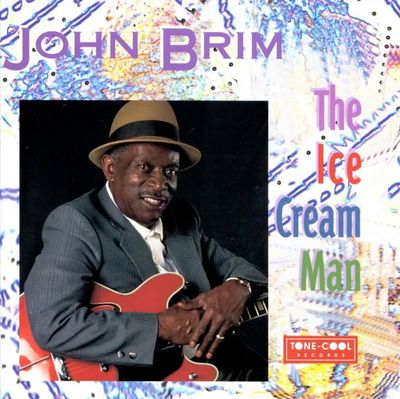
THE ICE CREAM MAN
Tone-Cool
August 1992
Il s'agit d'un véritable retour aux affaires pour John Brim qui, hormis quelques rares titres en 1971 et en 1989, n'avait rien enregistré depuis près de 35 ans. Supervisé par les producteurs Bart Pate et Richard Rosenblatt mais aussi par le guitariste Bob Margolin, l'album s'impose d'emblée comme une franche réussite. Même si John a désormais la voix un peu affaiblie, il reste un bluesman remarquable parfaitement accompagné ici par des sidemen chevronnés (Bob Margolin, Jerry Portnoy, Anthony Geraci). On peut retenir dans cet intense programme de pur Chicago Blues "Ice cream man", "Lonesome man blues", "Tough times", "Be careful", "This old hangover", "Standin' around cryin'".
It's a real return to business for John Brim, who, apart from a few rare tracks in 1971 and 1989, hadn't recorded anything for almost 35 years. Supervised by producers Bart Pate and Richard Rosenblatt, as well as guitarist Bob Margolin, the album is an immediate success. Even if John's voice has a little weakened, he remains a remarkable bluesman, perfectly accompanied here by seasoned sidemen (Bob Margolin, Jerry Portnoy, Anthony Geraci). We can point out in this intense program of pure Chicago Blues : “Ice cream man”, “Lonesome man blues”, “Tough times”, “Be careful”, “This old hangover”, “Standin‘ around cryin’”.
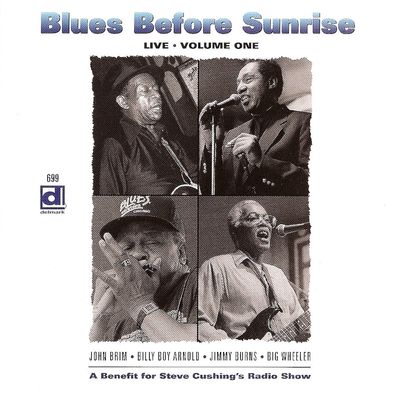
BLUES BEFORE SUNRISE vol.1
Delmark
October 1996
Il s'agit d'un concert qui fut organisé pour le soutien de l'émission de radio "Blues before sunrise" animée par Steve Cushing sur WBEZ. Un disque intéressant, quoique relativement mineur, qui permet, surtout, de soutenir une émission qui existe depuis 1980. John Brim joue quatre bons morceaux sur scène.
This is a concert that was organized to support the radio show "Blues before sunrise" hosted by Steve Cushing on WBEZ. An interesting disc, although relatively minor, which, importantly, support a program that has existed since 1980. John Brim plays four good songs on stage.
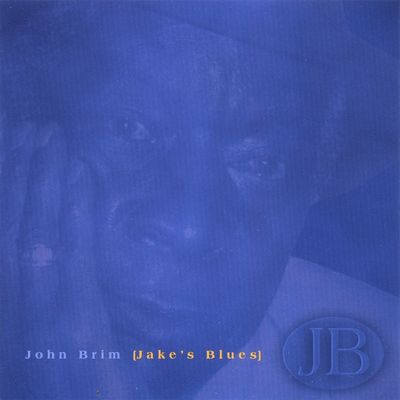
JAKE'S BLUES
Anna Bea
1999
Désormais assez âgé, John a une voix assez faible. Pourtant, entouré de bons musiciens (le guitariste Billy Flynn), il propose un album de blues plaisant qu'il dédie à sa femme Grace (décédée pendant la réalisation de l'album et dont on entend le dernier enregistrement). On retient en particulier "Tougher times" et "What may be your name". Octogénaire, John continuera sa carrière de bluesman (sa participation au Chicago Blues Festival de 2002 est une de ses dernières apparitions) et disparaitra en octobre 2003 dès suites d'un cancer.
Now quite old, John's voice is rather weak. Nevertheless, surrounded by good musicians (guitarist Billy Flynn), he proposed a pleasant blues album that he dedicated to his wife Grace (who died during the making of the album, and whose last recording we hear). Highlights include “Tougher times” and “What may be your name”. Octogenarian, John continues his blues career (his participation in the 2002 Chicago Blues Festival was one of his last appearances) and dies in october 2003 of cancer.